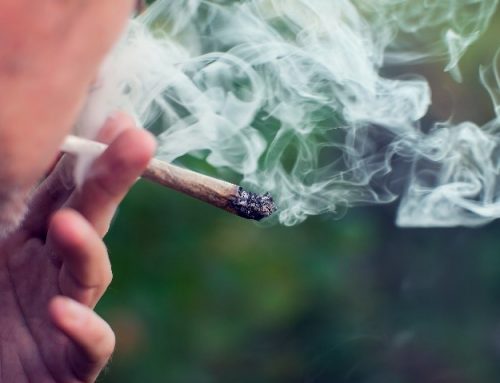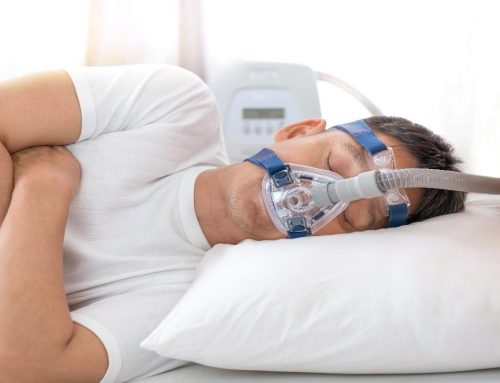Table of Contents
Why You Should Clean Your CPAP Machine
 More than 22 million persons in America suffer from sleep apnea. We understand that the most common form of this condition—obstructive sleep apnea (OSA)—is more than just a nuisance; numerous studies indicate that disrupted sleep is linked to greater risks of dangerous diseases and conditions, such as:
More than 22 million persons in America suffer from sleep apnea. We understand that the most common form of this condition—obstructive sleep apnea (OSA)—is more than just a nuisance; numerous studies indicate that disrupted sleep is linked to greater risks of dangerous diseases and conditions, such as:
- Heart illness
- High blood pressure
- Stroke
- Type 2 diabetes
There are many other illnesses that OSA is associated with, and it plays an essential role in seemingly unrelated issues, too. For instance, those with OSA are five times more likely to have an auto accident than individuals who don’t have OSA. It’s not just the patient who endures interrupted sleep; regularly, their partners are sleep deprived and then end up suffering from some of the same problems of sleep deprivation.
A Doctor’s Professional Analysis: How Important is it to Clean Your CPAP Machine?
“In my Sleep Medicine practice, almost all of my patients with OSA are prescribed a CPAP to treat their disorder. It’s one of the most reliable and effective sleep apnea treatments available, and patients can see a huge improvement—if they comply with the protocol and use it frequently. That’s the first obstacle, effectively getting the message across as to how crucial it is that the CPAP is used every night. They see the best outcomes when they use it for the entire night, but, in my observation, even using it just four to five hours a night regularly makes a marked difference in enhancing their health and mitigating the adverse implications of untreated OSA.
“After getting CPAP machines, the second hurdle to follow in their CPAP protocol is to enable them to understand the significance of cleaning their machine frequently. I recommend cleaning the mask and hose daily because utilizing a device that has not been effectively sanitized puts patients at higher risk of infection and illness. The reasons for consistent cleaning are simple:
- Oil, sweat, and dead skin cells can collect in the CPAP mask every time it’s used.
- The water in the device and the moisture in the mask and hose are potential breeding grounds for bacteria and germs.
“Research from Brigham and Women’s Hospital and Harvard Medical School found 2,000+ bacteria counts evident after just 48 hours on 48 percent of samples from CPAP masks they collected. Another study indicated that patients who use CPAP are 32 percent more likely to get pneumonia, in part because of poor CPAP maintenance.
“In my practice, I see patients who will complain of respiratory diseases several times per year—and when I dig down into what could be a contributing factor, more often than not, I find that they are in the group that doesn’t clean their CPAP frequently. Once I convince them of the significance of that step and then comply, their incidence of respiratory infections goes down markedly.
 “I have had patients in my practice admit to me that not only do they neglect to clean their machine often, but they are also utilizing the same water for several days without changing it. When I talk to those patients who are not cleaning their machines frequently, there are a few common themes:
“I have had patients in my practice admit to me that not only do they neglect to clean their machine often, but they are also utilizing the same water for several days without changing it. When I talk to those patients who are not cleaning their machines frequently, there are a few common themes:
- It causes a lot of trouble.
- It’s too difficult to keep it clean.
- It consumes much time.
“Currently, with so many CPAP cleaning choices available, patients should have no excuse for putting off this essential step in their OSA treatment.”
CPAP Cleaning Choices
Some of the cleaning methods such patients can select from including the following:
Soap and Water
The old way of disassembling the mask and hose and cleaning it with soap and water can be time consuming and inconvenient. If it’s not performed with extreme attention to detail, it can also be unproductive, because hard-to-reach surfaces in the humidifiers, masks, and hoses may be potential breeding grounds for bacteria. Another consideration that makes this technique suboptimal is that the very means of cleaning—tap water—can be a potential source of pathogens.
Vinegar and Water
Like the soap-and-water method, this way of cleaning necessitates users to, first, disassemble their CPAP. Then the device must be soaked for at least 20 minutes, rinsed thoroughly, and, finally, allowed to dry wholly. So, for CPAP patients who select this method—which in itself is a time-consuming process—there is the chance of introducing bacteria to the device at multiple points.
CPAP Cleaning Machines
Some of these machines, such as SoClean and VirtuClean use Ozone or activated oxygen, while others like Lumin use ultraviolet light to clean CPAP machines. The biggest benefit of using any of these cleaning machines is the fact that they clean your CPAP machine for you. You don’t have to worry about taking your CPAP machine apart and cleaning every inch of it with soap and water. Others, such as the SoClean allow you to create automatic cleaning schedules. What’s more, these machines get rid of 99.9% of all bacteria, viruses, and mold that could be growing on your CPAP machine.



 Shop
Shop



